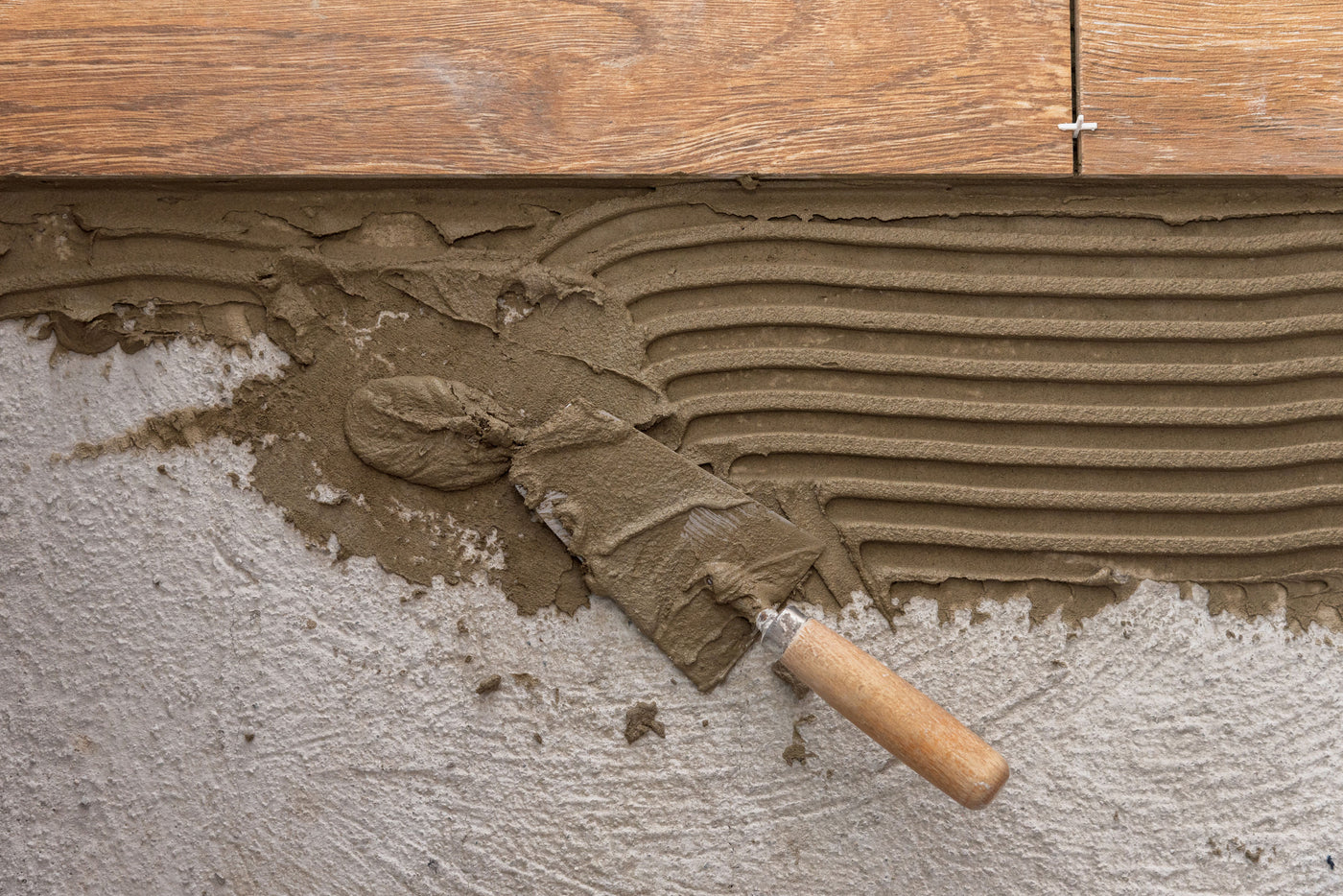Your Cart is Empty

Vinyl and engineered hardwood materials require different types of adhesives. When applying an adhesive to a flooring material, use the manufacturer-specific adhesive for your application.
Not using a specified product could void your warranty and cause the material to loosen from the subfloor.
Below, we compare the different types of adhesives and provide some tips for choosing the right type of adhesive for your flooring.
If you are installing vinyl, engineered hardwood, or similar types of flooring, you may need to use an adhesive to secure the flooring to the floor base. Let’s take a closer look:
Below is an overview of the types of adhesives for flooring materials we listed above.
Polyurethane-based adhesives are common with wood flooring applications. They are also used with other flooring installations. The adhesive forms a chemical bond with wood cells and with the concrete below flooring. These bonds are strong and elastic. A urethane-based adhesive is moisture proof once cured.
Acrylic adhesives are resin-based and are strong and efficient. They are most widely used with tile, stone, and LVT/vinyl products. These adhesives are sun resistant, can withstand temperature fluctuations, and are moisture-resistant.
Water-based adhesives contain a lower VOC content. They are more of a green adhesive and better for the environment. The adhesive is easy to clean off the floor once the project is complete. Because the adhesive is water-based, too much moisture can cause the bond to become weak.
Are you looking for a durable hardwood product for your home? At E Hardwoods & Flooring, offers natural hardwoods, engineered wood flooring, solid prefinished wood flooring, vinyl plank flooring, and vinyl tile flooring through our eCommerce store.
To find our more about our products or order your flooring, check out our available prefinished hardwood flooring options.